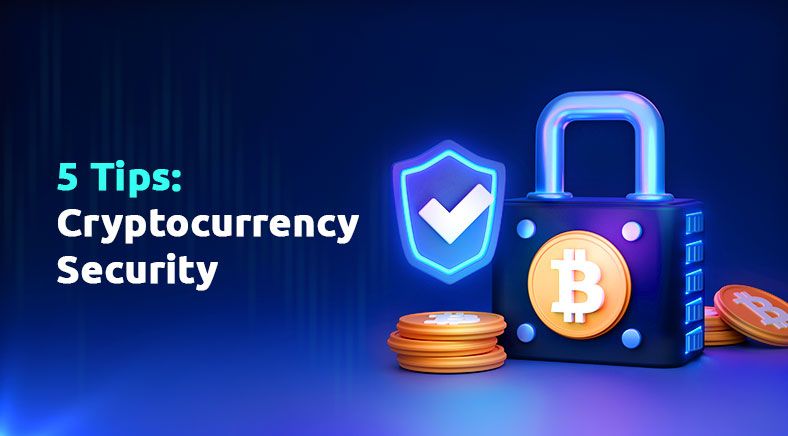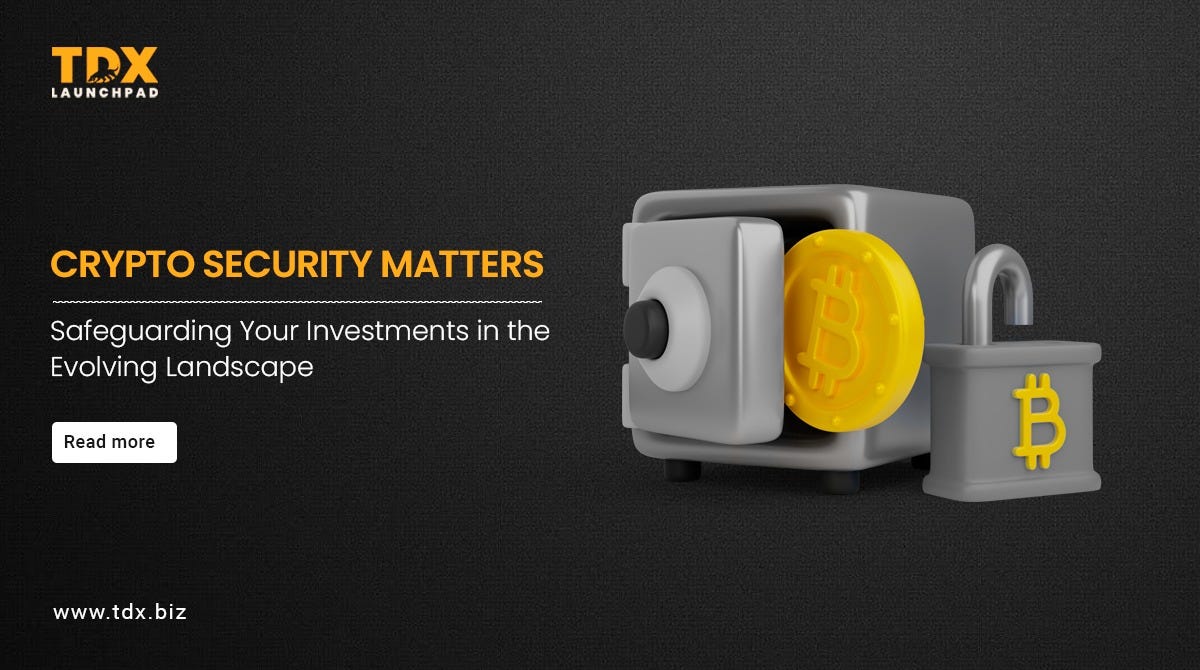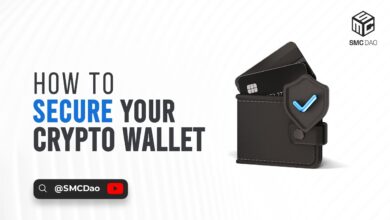
The Best Cybersecurity Practices for Crypto Investments
The Best Cybersecurity Practices for Protecting Crypto Investments is crucial in today’s digital landscape. Cryptocurrencies, NFTs, and other digital assets are rapidly gaining popularity, attracting both investors and criminals. This makes robust security measures essential for safeguarding your digital wealth.
This post dives deep into the practical steps you can take to protect your crypto investments. From choosing strong passwords to understanding different wallet types, we’ll cover everything you need to know to navigate the complexities of crypto security.
Introduction to Crypto Security

Source: cryptal.com
The cryptocurrency market, while offering exciting opportunities for investment, is also fraught with risks. Security breaches, scams, and market volatility are all potential threats to your digital assets. Understanding these risks and implementing robust cybersecurity practices is paramount for safeguarding your crypto investments. Without adequate protection, even seemingly small vulnerabilities can lead to significant financial losses.Robust cybersecurity practices are crucial for mitigating the risks inherent in the cryptocurrency market.
These practices encompass a broad range of measures, from securing your personal devices and wallets to understanding the security protocols employed by crypto exchanges and the specific risks associated with various crypto assets. By adopting a proactive approach to security, you can significantly reduce the likelihood of becoming a victim of fraud or a cyberattack.
Crypto Asset Types and Security Considerations
Different types of crypto assets present unique security challenges. Bitcoin, the pioneering cryptocurrency, relies on a decentralized ledger and strong cryptographic hashing algorithms for security. Ethereum, a platform for decentralized applications, also utilizes blockchain technology but with a wider range of potential vulnerabilities due to its more complex architecture. Non-fungible tokens (NFTs) represent digital ownership and often reside on blockchain platforms.
The security of NFTs is linked to the security of the underlying blockchain and the platform where they are stored. NFTs are particularly vulnerable to smart contract exploits and fraudulent minting practices.
Crypto Exchange Security Protocols
The security of your crypto investments is significantly influenced by the security measures implemented by the crypto exchange you choose. Exchanges employ a variety of protocols to protect user funds and data. These protocols vary in sophistication and effectiveness.
| Exchange | Security Protocols | Strengths | Weaknesses |
|---|---|---|---|
| Binance | Multi-factor authentication, cold storage, advanced fraud detection systems | Widely recognized for robust security measures | Potential for insider threats, regulatory scrutiny |
| Coinbase | Two-factor authentication, encryption, advanced fraud detection | Strong reputation for user protection, compliance | Limited information on specific security protocols, evolving regulations |
| Kraken | Advanced encryption, cold storage, robust security audits | Known for strong security practices, regulatory compliance | Limited public disclosure of specific security protocols |
| KuCoin | Multi-factor authentication, encryption, risk management protocols | Large user base, growing security measures | Varying security measures depending on regions, transparency concerns |
Note: The information in the table provides a general overview of the security protocols used by these exchanges. Specific protocols and their effectiveness can vary and are subject to change. Always verify the latest security information directly from the exchange’s official website. Furthermore, individual user vigilance is crucial in mitigating potential risks.
Strong Password Management
Protecting your crypto investments hinges heavily on the security of your accounts and wallets. A crucial component of this security is robust password management. Weak passwords are a major vulnerability, leaving your digital assets susceptible to theft. This section details best practices for creating and managing strong passwords for crypto-related accounts.Password security is paramount when dealing with cryptocurrencies.
A compromised account can lead to the loss of your entire investment, making robust password practices an essential element of your security strategy. Implementing these practices will significantly enhance the safety and protection of your crypto assets.
Password Complexity and Length
Strong passwords are the first line of defense against unauthorized access. Password complexity and length directly influence their strength. Longer passwords with a mixture of characters are significantly harder to crack. The more complex and lengthy the password, the more time and computational power it takes to decipher it.
Strong Password Generation Methods
Using a combination of uppercase and lowercase letters, numbers, and symbols creates a much stronger password. Avoid using easily guessable information like birthdays, names, or common words.
A strong password should be at least 12 characters long, incorporating a mix of uppercase and lowercase letters, numbers, and symbols.
Examples of strong password generation methods include employing password generators, which can produce random and complex sequences. These tools can help generate strong passwords that are difficult to crack.
Importance of Password Managers
Password managers are essential tools for securely storing and managing multiple passwords. They automate the process of creating and remembering strong passwords, significantly reducing the risk of weak or reused passwords.Setting up a password manager involves downloading the software and creating an account. This account requires a master password, which is crucial to protect the stored credentials. Use a strong, unique master password for your password manager to maintain security.
Secure Storage of Recovery Phrases/Seed Phrases
Recovery phrases or seed phrases are crucial for accessing your crypto wallets if you lose access to your device or account. These phrases must be stored securely, in a physically separate location from your digital devices and crypto wallets.
Store recovery phrases in a physical, secure location, separate from your digital devices and crypto wallets.
Avoid storing them on devices that can be easily compromised, such as computers or smartphones. Consider using a physical vault, a safe deposit box, or a trusted third party service.
Table: Dangers of Weak Passwords
| Weak Password Characteristic | Potential Consequences |
|---|---|
| Short length (fewer than 8 characters) | Easily cracked using brute-force attacks |
| Reused passwords across multiple accounts | Compromising one account potentially exposes all others |
| Simple or common words | Easily guessed by attackers |
| Lack of character variety (e.g., only letters or numbers) | Vulnerable to dictionary attacks |
| Using personal information | Attackers can exploit readily available personal information to guess passwords |
Two-Factor Authentication (2FA)
Two-factor authentication (2FA) is a crucial security layer for protecting your cryptocurrency investments. It adds an extra layer of verification beyond just a password, making it significantly harder for unauthorized individuals to access your accounts, even if they manage to obtain your password. This enhanced security is vital in the volatile and often targeted world of cryptocurrency.FA works by requiring two forms of authentication: something you know (your password) and something you have (a verification code).
This combination makes it practically impossible for hackers to gain access without both pieces of information. This is a critical practice for protecting your assets from theft.
Strong cybersecurity practices are crucial for safeguarding crypto investments, especially as the digital economy evolves. NFTs are rapidly gaining traction, and understanding their role in the future digital economy is becoming increasingly important. For instance, Understanding the Role of NFTs in the Future Digital Economy highlights the potential of these digital assets. Ultimately, a robust approach to cybersecurity remains paramount for protecting crypto holdings in this evolving landscape.
Benefits of Using 2FA for Crypto Accounts
Implementing 2FA for all your cryptocurrency accounts dramatically reduces the risk of unauthorized access. Even if a hacker compromises your password, they still need the second authentication factor to gain access to your funds. This significantly enhances the security posture of your crypto portfolio, providing a critical safeguard against account breaches.
Different Types of 2FA Methods
Various methods exist for implementing 2FA, each with its own security characteristics.
- SMS-based 2FA: This method sends a one-time code via text message to your mobile phone. It’s widely available and relatively easy to set up, but it relies on the security of your phone number and the integrity of the SMS platform. A compromised mobile phone can lead to unauthorized access to your accounts.
- Authenticator Apps (e.g., Google Authenticator, Authy): These apps generate time-based one-time passwords (TOTPs). These are generally more secure than SMS-based 2FA as they don’t rely on the SMS infrastructure. They typically use stronger cryptographic algorithms. The loss or compromise of the device where the authenticator app is installed poses a security risk.
- Hardware Tokens: These physical devices generate one-time codes. They offer the highest level of security as they are physically separate from your computer or mobile device. The security of the hardware token itself is crucial. Their cost and the need for physical management are potential drawbacks.
Comparison of 2FA Method Security Strengths
The security strength of different 2FA methods varies significantly. SMS-based 2FA is generally the least secure due to potential vulnerabilities in the SMS platform and the inherent risk of phone number compromise. Authenticator apps offer a good balance between security and convenience, while hardware tokens provide the strongest protection due to their physical separation and cryptographic robustness.
Potential Security Vulnerabilities Associated with 2FA and Mitigation
Despite the increased security, 2FA is not invulnerable. Phishing attacks can still target 2FA codes. Criminals can attempt to trick you into revealing your verification codes through deceptive emails or messages. Strong password management practices, vigilance, and the use of a strong, unique password for each account can help mitigate this. Furthermore, choosing a trusted authenticator app and keeping it updated with the latest security patches will reduce the risk of compromise.
Steps to Set Up 2FA for Crypto Platforms
Setting up 2FA varies depending on the cryptocurrency exchange or wallet. The following table Artikels a general process.
| Crypto Platform | Step 1 | Step 2 | Step 3 |
|---|---|---|---|
| Binance | Navigate to Security settings | Enable 2FA | Choose the desired 2FA method (e.g., Google Authenticator) and follow the prompts. |
| Coinbase | Go to Account Security | Select Two-Factor Authentication | Choose your authentication method (e.g., authenticator app) and follow the on-screen instructions. |
| MetaMask | Open the settings menu | Select Security | Enable 2FA by using a 2FA app. |
Secure Wallet Management
Protecting your crypto investments hinges heavily on secure wallet management. A robust wallet strategy is a crucial component of a comprehensive cybersecurity plan. This involves understanding the nuances of various wallet types and implementing best practices for storage and security. Choosing the right wallet and managing it correctly can significantly reduce the risk of loss or compromise.
Hot Wallets vs. Cold Wallets
Hot wallets are connected to the internet, enabling quick access and transactions. Their accessibility, however, makes them vulnerable to online threats like hacking and malware. Conversely, cold wallets operate offline, minimizing this vulnerability. They are physically separated from the internet, and transactions are processed through a secure connection when needed. The security of cold wallets significantly outweighs the convenience of hot wallets, making them a preferable choice for long-term storage.
Secure Private Key Management
Private keys are the digital keys that grant access to your cryptocurrency holdings. Storing them securely is paramount. Never share your private keys with anyone. Offline storage is the safest option. If you must store them online, ensure the platform employs robust security measures, including encryption and multi-factor authentication.
Using a password manager to securely store your wallet access credentials, combined with strong password practices, is a practical approach. Remember, the security of your private keys directly impacts the security of your entire cryptocurrency portfolio.
Secure Wallet Storage Solutions
Choosing the right wallet storage solution depends on your specific needs and risk tolerance. Different use cases demand different levels of security.
- Hardware Wallets: These physical devices provide a secure offline environment for storing private keys. They typically use strong encryption and are resistant to malware and hacking attempts. A hardware wallet is a robust choice for long-term storage of significant cryptocurrency holdings. Examples include Ledger Nano S and Trezor.
- Software Wallets: These wallets operate on a computer or mobile device. They often utilize encryption to protect private keys, but the security of your device is crucial. If your device is compromised, your funds are at risk. Software wallets are suitable for occasional transactions but not ideal for long-term storage.
- Paper Wallets: These wallets use paper to generate private keys. They are essentially offline, providing strong security against online threats. However, physical security is critical. Storing them in a secure, offline location is paramount. Paper wallets are well-suited for small transactions or test environments.
Creating and Backing Up a Hardware Wallet
Creating and backing up a hardware wallet involves a few crucial steps. First, carefully follow the manufacturer’s instructions for initial setup. Then, generate a backup phrase (seed phrase) – a crucial step to recover your funds in case of device loss or damage. Write this phrase down on paper, store it securely, and keep it separate from your hardware wallet.
Regularly check your backup and keep a record of its location.
Solid cybersecurity is crucial for safeguarding crypto investments, and understanding the potential of blockchain technology is key. The rise of blockchain adoption, as discussed in this insightful article about Why Blockchain Adoption Will Shape the Future of Global Economy , highlights the need for even more robust security measures. Ultimately, a strong understanding of both the technology and the security protocols is essential for anyone looking to invest in cryptocurrencies.
Secure Storage Practices for Paper Wallets
Protecting paper wallets involves careful consideration of physical security. Store them in a secure, tamper-proof location, ideally a vault or a fireproof safe. Consider using multiple layers of security. For example, combine a physical safe with a password-protected digital record of your seed phrase. This approach significantly reduces the risk of losing access to your funds.
Comparison of Wallet Types
| Wallet Type | Pros | Cons |
|---|---|---|
| Hardware Wallet | High security, offline storage, robust protection | Can be more expensive, learning curve might be steeper |
| Software Wallet | Easy to use, often free | Security depends on device security, potential for online threats |
| Paper Wallet | Highly secure (offline), low cost | Requires extreme physical security, prone to loss or damage |
Transaction Security
Cryptocurrency transactions, while often portrayed as anonymous, require meticulous attention to detail. Security is paramount; a single slip-up can lead to irreversible loss. Understanding the intricacies of transaction verification, scam identification, and secure exchange practices is crucial for safeguarding your crypto investments. This section delves into practical steps to protect your digital assets during each transaction.
Verifying Transaction Details
Before initiating any cryptocurrency transfer, meticulous verification of transaction details is essential. Double-checking the recipient address, amount, and intended transaction is critical to prevent accidental mishaps or malicious attacks. A simple typo in the recipient address can result in funds being sent to a fraudulent account, effectively losing them forever. Thoroughly review all aspects of the transaction to confirm its legitimacy.
Identifying and Avoiding Phishing and Scams
Phishing and scams targeting cryptocurrency users are increasingly sophisticated. These fraudulent schemes often employ deceptive tactics, mimicking legitimate platforms or services. Users must remain vigilant and employ critical thinking to avoid becoming victims. Never click on suspicious links or provide personal information to unknown sources. Always verify the legitimacy of websites and platforms before engaging in any transaction.
Crucially, scrutinize requests for personal information or cryptocurrency keys.
Monitoring Transaction History
Regularly monitoring transaction history is a vital component of crypto security. This allows for prompt detection of any unusual or unauthorized activity. Setting up alerts for significant transactions or changes in wallet balances can provide early warning systems. By staying informed about transaction activity, users can promptly address potential threats and safeguard their funds. A well-maintained transaction history provides an invaluable audit trail for identifying and resolving discrepancies.
Securing Transactions on Decentralized Exchanges (DEXs)
Decentralized exchanges (DEXs) offer an alternative to centralized platforms, but they also present unique security considerations. Using strong, unique passwords and enabling two-factor authentication (2FA) is crucial. Thorough research into the specific DEX platform’s security measures and community reputation is essential. Always use reputable and well-vetted DEXs to mitigate potential risks. Review the exchange’s security protocols and policies to understand how your transactions are protected.
Comparing Transaction Confirmation Methods
| Confirmation Method | Security Level | Description |
|---|---|---|
| Single Confirmation | Low | Funds are considered “sent” after one block confirmation. This is the fastest but potentially riskier option as transactions can be reversed. |
| Three Confirmations | Medium | Requires three block confirmations, increasing the security of the transaction, though not fully preventing reversals. |
| Six Confirmations | High | Six block confirmations are generally considered a good compromise between speed and security, reducing the likelihood of reversals. |
| Twelve Confirmations | Very High | This method provides a high level of security, minimizing the chances of transaction reversals, but often comes at a longer delay. |
Transactions involving larger sums of cryptocurrency often necessitate more confirmations for enhanced security.
Software and Device Security: The Best Cybersecurity Practices For Protecting Crypto Investments
Protecting your crypto investments extends beyond just your passwords and wallets. Robust software and device security is equally crucial. Vulnerable software or compromised devices can expose your private keys and funds to malicious actors, regardless of the strength of your other security measures. This section details essential steps to safeguard your digital assets.Regular software updates are vital, especially for crypto wallets and related applications.
Outdated software often contains known vulnerabilities that hackers can exploit. Keeping your software current mitigates these risks and ensures you have the latest security patches.
Regular Software Updates
Outdated software is a major security risk. Software developers frequently release updates to address security vulnerabilities. These updates often include crucial patches to fix known weaknesses in the software. By delaying updates, you are effectively leaving a backdoor for attackers. This is especially true for crypto wallets and related apps, as these applications often store sensitive information like private keys.
Failing to update your software regularly significantly increases your risk of a security breach.
Antivirus and Anti-Malware Software
Employing robust antivirus and anti-malware software is paramount. These tools actively scan for and neutralize malicious programs, such as viruses, spyware, and ransomware, which are designed to compromise your system and steal sensitive data. Malicious software can infiltrate your device through various means, including phishing emails, infected websites, or malicious attachments. Having up-to-date anti-malware software provides a critical defense against these threats.
Malware and Vulnerability Scanning
Regularly scanning your devices for malware and vulnerabilities is essential for proactive security. Malware can manifest in various forms, including Trojans, worms, and ransomware, each with its own set of harmful capabilities. Vulnerabilities can be exploited by malicious actors, leading to data breaches or system compromises. Proactive scanning helps identify and address potential issues before they escalate into significant problems.
Responding to Suspected Compromises, The Best Cybersecurity Practices for Protecting Crypto Investments
If you suspect a device has been compromised, immediate action is critical. Indicators of compromise include unusual activity, unexpected pop-ups, or unexplained changes to your system settings. Immediately disconnect the compromised device from the internet. Change your passwords, and consider contacting your crypto exchange or wallet provider for guidance. Do not hesitate to seek professional assistance if you are unsure of the next steps.
Strong Device Encryption
Implementing strong device encryption is a fundamental security practice. Encryption transforms your data into an unreadable format, rendering it unusable to unauthorized individuals. This is particularly important for devices that store sensitive information, such as private keys. Without encryption, your data is vulnerable to theft if your device is lost or stolen. Modern encryption algorithms, such as AES-256, offer strong protection against unauthorized access.
Types of Malware Targeting Crypto Users
Several types of malware specifically target crypto users. Ransomware encrypts your data and demands payment for its release. Cryptojacking software uses your device’s resources to mine cryptocurrency without your consent. Spyware monitors your activities and collects sensitive information, such as login credentials and private keys. Phishing scams attempt to trick users into revealing their private keys or other sensitive information.
Knowing the specific threats helps you tailor your security measures.
Securing Devices from Malware and Vulnerabilities
| Step | Action |
|---|---|
| 1 | Regular Software Updates: Ensure all software, especially crypto wallets and related apps, are updated to the latest versions. |
| 2 | Robust Antivirus/Anti-malware: Install and maintain up-to-date antivirus and anti-malware software on all devices. |
| 3 | Scheduled Scans: Regularly scan your devices for malware and vulnerabilities using the antivirus/anti-malware tools. |
| 4 | Strong Passwords: Use strong, unique passwords for all accounts, including crypto wallets. |
| 5 | Device Encryption: Enable device encryption on all devices that store sensitive information. |
| 6 | Suspicious Activity: Be alert for unusual activity on your devices and take immediate action if necessary. |
| 7 | Secure Wi-Fi: Use a secure Wi-Fi connection whenever possible, especially when accessing crypto-related services. |
| 8 | Verify Sources: Verify the legitimacy of websites and emails before clicking on links or downloading attachments. |
Community and Social Media Safety
Navigating the crypto community online requires a cautious approach. Social media platforms are buzzing with discussions about investments, trading strategies, and new projects. However, this vibrant environment also harbors risks, including scams and malicious actors aiming to exploit unsuspecting investors. Understanding these dangers and practicing safe online habits is crucial for protecting your crypto assets.
Verifying Online Identities
The crypto community thrives on interaction, but verifying the identity of individuals you engage with online is paramount. Be wary of individuals claiming extraordinary returns or promising unrealistic gains, especially if they insist on private communication channels. Always seek independent verification of any person or entity promoting a cryptocurrency investment. Look for publicly available information about their track record and credentials, and don’t hesitate to cross-reference claims.
A quick search for known scams can save you from becoming a victim.
Spotting and Avoiding Scams
Scammers often employ sophisticated tactics to deceive investors. Be vigilant about unusual requests for personal information, particularly private keys or sensitive financial details. Be skeptical of messages that promise quick riches or require immediate action. Look for inconsistencies in grammar, spelling, or the overall tone of communications. A genuine opportunity will rarely demand urgent action or immediate payments.
Red flags include generic greetings, poorly written messages, and a lack of verifiable credentials. Check the sender’s profile for any suspicious activity.
Securing your crypto investments requires a multifaceted approach, encompassing robust passwords and two-factor authentication. A crucial element is understanding cold storage solutions, like hardware wallets, for long-term security. This approach dramatically reduces the risk of hacks and theft, making it an essential part of any comprehensive cybersecurity plan. For more detailed insights on the best cold storage solutions, check out Understanding Cold Storage Solutions for Long-Term Cryptocurrency Security.
Ultimately, a blend of these strategies forms the best defense against cyber threats targeting your crypto holdings.
Avoiding Sensitive Information Sharing
Sharing sensitive information on public forums or social media is extremely risky. Avoid posting your private keys, wallet addresses, or personal details. Even seemingly harmless details can be pieced together to compromise your security. Remember, the digital footprint you leave online can be used to target you for fraud. Maintain discretion and limit your online disclosures to legitimate and secure channels.
Maintaining a Low Profile
A low profile online can significantly reduce your risk. Avoid broadcasting your wealth or investment strategies. Don’t boast about large holdings or recent profitable trades on social media. This kind of behavior attracts unwanted attention and makes you a more tempting target for scammers. Maintain a degree of anonymity and avoid oversharing information about your crypto activities.
Social Engineering Tactics
Social engineering tactics prey on human psychology to manipulate individuals into divulging sensitive information. Phishing emails, fake websites, and deceptive messages are common methods used to trick investors. A sophisticated scammer might impersonate a trusted figure or leverage current events to create a sense of urgency. Recognize these patterns and be cautious of unsolicited communications, particularly those requiring immediate action.
Creating a Secure Social Media Presence
A secure social media presence for crypto activities requires a multi-layered approach. Use strong and unique passwords for all accounts. Enable two-factor authentication (2FA) wherever possible. Limit your interactions to trusted and verified sources. Regularly review your social media accounts for suspicious activity.
Be cautious about links shared in messages, and avoid clicking on unfamiliar or untrusted links. Thoroughly vet any information or suggestions before taking any action.
Incident Response Plan

Source: medium.com
A robust incident response plan is crucial for mitigating the damage and ensuring swift recovery in the event of a crypto investment security breach. Having a well-defined plan minimizes downtime, financial losses, and reputational damage. This plan acts as a roadmap, guiding actions and responsibilities during a crisis.
Steps to Take in Case of a Security Breach
A security breach can be devastating to a crypto portfolio. A proactive response is critical to minimize the impact. Immediate actions include isolating compromised systems, identifying the extent of the breach, and securing any remaining vulnerable assets.
- Isolate the compromised system(s): Immediately disconnect the affected device or wallet from the network to prevent further data leakage or unauthorized access. This action is paramount in containing the breach.
- Assess the extent of the breach: Determine the nature and scope of the security incident. This involves identifying the compromised accounts, the type of data lost, and the potential financial impact.
- Secure remaining vulnerable assets: Implement measures to safeguard any remaining assets or accounts that might be at risk. This could include changing passwords, enabling two-factor authentication, and disabling unnecessary services.
- Alert the appropriate personnel: Inform relevant stakeholders, such as your team or advisors, about the security incident. This ensures coordinated and timely responses.
Importance of a Recovery Plan
A well-structured recovery plan is indispensable for restoring operations and mitigating losses after a security breach. It Artikels the steps to take to get back on track and resume normal activities.
- Establish a dedicated recovery team: Form a team responsible for managing the recovery process. This team should include individuals with expertise in security, finance, and operations.
- Develop a timeline for recovery: Artikel the steps and timelines for each recovery task to ensure a structured and efficient process. This helps maintain control during a crisis.
- Secure backup data: Regularly back up critical data to prevent data loss in the event of a security incident. This backup should be stored in a secure and separate location.
Reporting a Security Incident to Authorities
Reporting a security incident to the appropriate authorities is a critical step in maintaining compliance and transparency. This can involve contacting law enforcement, regulatory bodies, or your crypto exchange.
- Identify the appropriate authorities: Determine which authorities need to be informed about the security incident. This depends on the nature and severity of the breach.
- Document the incident thoroughly: Create a detailed report outlining the security incident, including the date, time, affected systems, and the impact of the incident. Preserve all evidence meticulously.
- Collaborate with law enforcement: In severe cases, cooperation with law enforcement is essential. This can involve providing them with the necessary information and cooperating with their investigation.
Incident Response Plan Template for Crypto Investments
A comprehensive incident response plan should Artikel the roles, responsibilities, and procedures for handling security incidents.
A template should include details about the reporting process, escalation procedures, and contact information for relevant parties.
| Step | Action | Responsible Party | Timeline ||—|—|—|—|| 1 | Identify and isolate compromised systems | Security Team | Immediate || 2 | Assess the extent of the breach | Security Team, IT Team | Within 24 hours || 3 | Secure remaining vulnerable assets | Security Team | Within 48 hours || 4 | Notify affected users | Customer Support Team | Within 24 hours || 5 | Report to authorities (if required) | Legal Counsel | As appropriate || 6 | Implement recovery plan | Recovery Team | As determined in the recovery plan |
Minimizing Damage from a Security Incident
Proactive measures can significantly reduce the impact of a security breach. These include implementing robust security protocols, educating users, and regularly auditing systems.
- Implement multi-factor authentication (MFA): This adds an extra layer of security, making it more difficult for attackers to gain access.
- Regularly update software and systems: Keeping software up-to-date addresses known vulnerabilities and improves security posture.
- Educate users on security best practices: Training users on phishing scams and other social engineering attacks is crucial in preventing security breaches.
Steps to Recover from a Security Breach
A structured recovery process is essential for restoring normal operations after a security breach.
| Step | Action | Timeline |
|---|---|---|
| 1 | Re-establish secure systems | Within 72 hours |
| 2 | Reconcile and restore funds | Within 5 business days |
| 3 | Review security protocols and implement improvements | Within 10 business days |
| 4 | Monitor for future breaches | Ongoing |
Outcome Summary

Source: ninjavpn.io
In conclusion, securing your crypto investments involves a multifaceted approach encompassing strong passwords, secure wallets, and vigilance against scams. By implementing the practices Artikeld in this post, you can significantly enhance the safety of your crypto holdings. Remember, proactive security measures are key to maintaining peace of mind in this ever-evolving digital world.
Clarifying Questions
What are some common crypto scams to watch out for?
Phishing emails and fake websites are common tactics. Be wary of unsolicited messages promising high returns or requesting personal information. Always verify the legitimacy of any requests or links before interacting with them.
How often should I update my crypto wallet software?
Regular software updates are crucial for patching security vulnerabilities. Check for updates regularly and install them promptly to stay protected from the latest threats.
What’s the difference between a hot wallet and a cold wallet?
Hot wallets are connected to the internet and are susceptible to online attacks. Cold wallets are offline, providing a higher level of security. The choice depends on your risk tolerance and usage frequency.
What should I do if I suspect my crypto account has been compromised?
Immediately change your passwords, enable two-factor authentication, and report the incident to the relevant authorities and the platform where your account exists.






